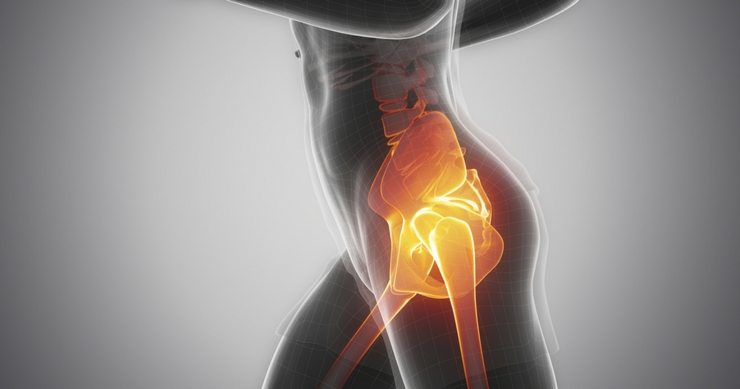
Hip Labral Tear
What is this condition? What causes this condition?
The labrum surrounding the ball and socket joint of the hip is made up of fibrocartilaginous tissue which acts to deepen the socket, ultimately increasing the stability of the hip joint (Narvani, 2003). Acute labral tears often occur after trauma or an incident, for example following a 1RM deep squat. An acute on chronic labral tear is often seen with a pattern of regular activity in labral loading positions, for example a landscaper who has increased their workload in the last month. Labral tears often present with anterior hip and groin pain, as well as pain deep in the gluteal region.
Common symptoms / signs
Common symptoms that individuals experience with labral tears include mechanical and inflammatory pain such as: aching overnight +- pain in AM and a dull ache when sitting down or resting. Aggravating actions include deep hip flexion-based activities such as squatting and sitting down. Individuals may also report clicking, catching, locking, giving way and pain on twisting activities.
Physiotherapists may find:
- Decreased hip ROM
- Decreased hip strength (acute = may be pain inhibited. Acute on chronic = may be weakness)
- Increased tone through gluteals, TFL and hip flexors upon palpation
- Positive FADIR + FABER
Risk factors of this condition?
- Abnormal hip morphology (CAM, pincer, mixed)
- Gender (women are more likely)
- Runners
- Athletes that participate in frequent external rotation and/or hyperextension of the hip
- Overweight individuals
(Guevara et al., 2006; Leibold et al., 2008)
How is it treated?
Conservative management is often first line treatment for individuals with hip labral tears (depending upon the severity of the tear) and is where physiotherapy can be implemented for treatment.
Education
It is important to educate the patient on posture and activity modification for symptom relief. As most hip pathologies find flexion-based positions aggravating, using a wedge when seated to position the hips higher than the knees can have a big impact on symptom relief. It is also important to modify loading to a manageable level of discomfort.
Education on pain is also important, with flareups being common in people with hip pain. As with pain in any region of the body, it can lead to fear avoidance and muscular inhibition. Physiotherapists are recommended to establish an acceptable level of pain to normalise movement and improve any deficits that may be present.
Exercises targeting impairments in ROM and strength in the hip are prescribed in the early phases of management, which can typically last for 4-12 weeks. The next phase typically involves individualised/sport specific exercises to further strengthen the hip joint for functional daily tasks, with the aim to modify loading on return to sport/work.
(Ganderton, 2021; Ganderton, 2021)
Other causes?
Femoroacetabular Impingement (FAI) results in compression and shear forces to the labrum and acetabulum rim which can lead to a labral damage and a possible tear (Shaw, 2017).
References
Ganderton, C. (2021). PHT60003, Lecture 2.2, Physiotherapy Assessment of Common Hip Conditions [PowerPoint Slides]. Physiotherapy Department, Swinburne University of Technology
Ganderton, C. (2021). PHT60003, Lecture 2.3, Physiotherapy Management of Common Hip Conditions [PowerPoint Slides]. Physiotherapy Department, Swinburne University of Technology
Guevara, C. J., Pietrobon, R., Carothers, J. T., Olson, S. A., & Vail, T. P. (2006). Comprehensive Morphologic Evaluation of the Hip in Patients with Symptomatic Labral Tear. Clinical Orthopaedics & Related Research, 453, 277–285. https://doi.org/10.1097/01.blo.0000246536.90371.12
Leibold, M. R., Huijbregts, P. A., & Jensen, R. (2008). Concurrent Criterion-Related Validity of Physical Examination Tests for Hip Labral Lesions: A Systematic Review. Journal of Manual & Manipulative Therapy, 16(2), 24E41E. https://doi.org/10.1179/jmt.2008.16.2.24e
Narvani, A. A. (2003). Acetabular labrum and its tears. British Journal of Sports Medicine, 37(>3), 207–211. https://doi.org/10.1136/bjsm.37.3.207
Shaw C. (2017). Femoroacetabular Impingement Syndrome: A Cause of Hip Pain in Adolescents and Young Adults. Missouri medicine, 114(4), 299–302.
